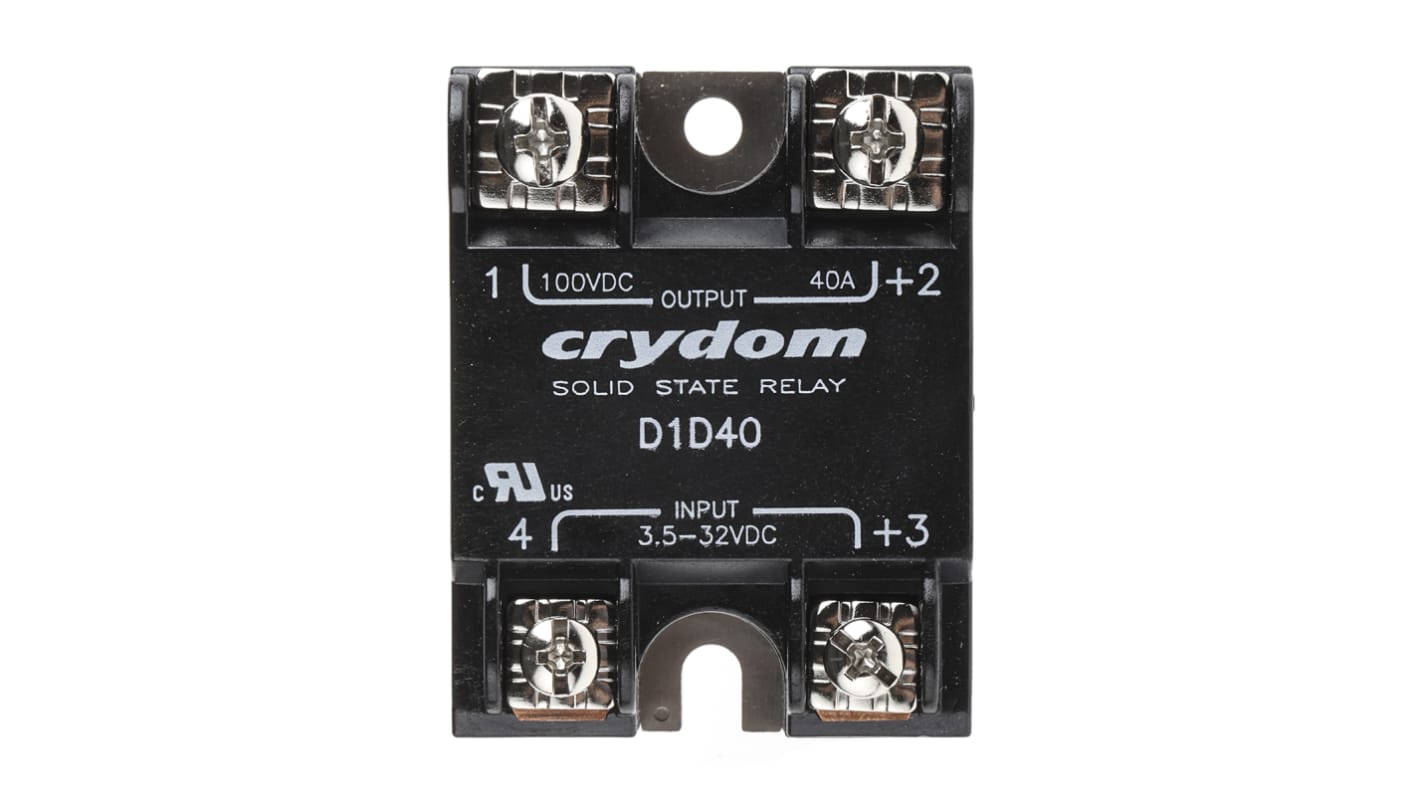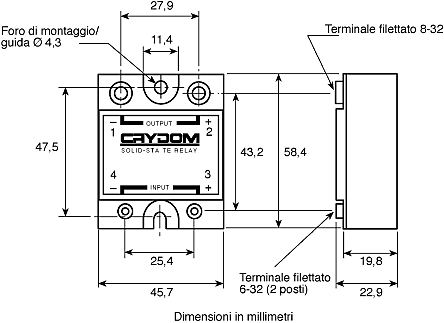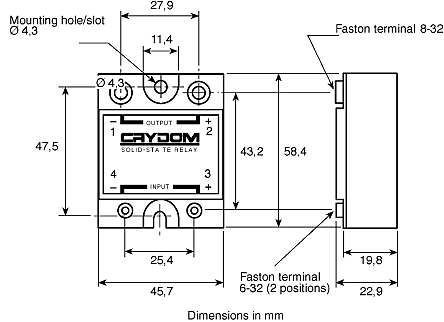Sensata Crydom 1-DC Series Solid State Relay, 40 A Load, Surface Mount, 100 V Load, 32 V Control
- RS Stock No.:
- 200-2064
- Distrelec Article No.:
- 137-44-909
- Mfr. Part No.:
- D1D40
- Brand:
- Sensata / Crydom

Bulk discount available
Subtotal (1 unit)*
£84.66
(exc. VAT)
£101.59
(inc. VAT)
FREE delivery for orders over £50.00
In Stock
- Plus 223 unit(s) shipping from 29 December 2025
- Plus 82 unit(s) shipping from 29 December 2025
- Plus 95 unit(s) shipping from 20 January 2026
Need more? Click ‘Check delivery dates’ to find extra stock and lead times.
Units | Per unit |
|---|---|
| 1 - 4 | £84.66 |
| 5 - 9 | £80.43 |
| 10 - 24 | £76.19 |
| 25 - 49 | £71.97 |
| 50 + | £67.72 |
*price indicative
- RS Stock No.:
- 200-2064
- Distrelec Article No.:
- 137-44-909
- Mfr. Part No.:
- D1D40
- Brand:
- Sensata / Crydom
Specifications
Technical Reference
Legislation and Compliance
Product Details
Find similar products by selecting one or more attributes.
Select all | Attribute | Value |
|---|---|---|
| Brand | Sensata / Crydom | |
| Maximum Load Current | 40 A | |
| Mounting Type | Surface Mount | |
| Maximum Load Voltage | 100 V | |
| Maximum Control Voltage | 32 V | |
| Minimum Control Voltage | 3.5 V dc | |
| Control Voltage Range | 3.5 → 32 V dc | |
| Minimum Load Current | 1 mA | |
| Output Device | MOSFET | |
| Load Voltage Range | 0 → 100V dc | |
| Series | 1-DC | |
| Dimensions | 45.7 x 58.4 x 23mm | |
| Length | 45.7mm | |
| Maximum Operating Temperature | +80°C | |
| Standards Met | UL | |
| Depth | 58.4mm | |
| Off State Leakage Current | 0.1 mA | |
| Minimum Operating Temperature | -20°C | |
| Operating Temperature Range | -20 → +80°C | |
| Height | 23mm | |
| Select all | ||
|---|---|---|
Brand Sensata / Crydom | ||
Maximum Load Current 40 A | ||
Mounting Type Surface Mount | ||
Maximum Load Voltage 100 V | ||
Maximum Control Voltage 32 V | ||
Minimum Control Voltage 3.5 V dc | ||
Control Voltage Range 3.5 → 32 V dc | ||
Minimum Load Current 1 mA | ||
Output Device MOSFET | ||
Load Voltage Range 0 → 100V dc | ||
Series 1-DC | ||
Dimensions 45.7 x 58.4 x 23mm | ||
Length 45.7mm | ||
Maximum Operating Temperature +80°C | ||
Standards Met UL | ||
Depth 58.4mm | ||
Off State Leakage Current 0.1 mA | ||
Minimum Operating Temperature -20°C | ||
Operating Temperature Range -20 → +80°C | ||
Height 23mm | ||
- COO (Country of Origin):
- MX


Sensata | Crydom Solid-State Relay, 40A Rated Load Current, Panel Mounting - 1-DC Series - D1D40
Switch DC loads in applications such as motors, lamps and solenoids with this solid-state relay from Sensata | Crydom. It has a rated load current of 40A, so it's suitable for use in heavy-duty applications. As it contains no moving parts, it requires little maintenance for an extended service life. Its panel-mounting style makes it simple to integrate into your existing system. Thanks to its compact dimensions of 44.5 (L) x 22.6 (W) x 57.3mm (H), it will take up minimal space on your panel.
Features & Benefits
• Can be connected in parallel to switch higher load currents
• Broad operating temperature range between -40°C and +100°C for use in harsh environments
• Internal overvoltage protection to prevent electrical damage
• Broad operating temperature range between -40°C and +100°C for use in harsh environments
• Internal overvoltage protection to prevent electrical damage
What are the differences between an SSR and an electromechanical relay?
An SSR has no moving parts, while an electromechanical relay does. SSRs often need heat sinks and fans to maintain the system at the required working temperature, while the alternative type has better thermal management. Electromechanical relays are more susceptible to interference from external magnetic fields.
Approvals
UL; CE; ISO
DC Switching
Related links
- Sensata Crydom 1-DC Series Solid State Relay Surface Mount 32 V Control
- Sensata Crydom 1-DC Series Solid State Relay Surface Mount 32 V Control
- Sensata Crydom 1-DC Series Solid State Relay Surface Mount 32 V Control
- Sensata Crydom 1-DC Series Solid State Relay Surface Mount 32 V Control
- Sensata Crydom 1-DC Series Solid State Relay Surface Mount 32 V Control
- Sensata Crydom 1-DC Series Solid State Relay Surface Mount 32 V Control
- Sensata Crydom 1-DC Series Series Solid State Relay Surface Mount 32 V Control
- Sensata Crydom 1-DC Series Solid State Relay Surface Mount 32 V Control
